A strip of rich green, deep pile ‘carpet’ slides off a conveyor and tumbles into an almost overflowing trailer below.
Closer inspection reveals the trailer is filled, not with carpet, but with sprouted barley, its roots so tightly woven they form a mat holding the young plants together.
Barley, says Helen and Eric Pidduck, is providing a nutritious supplement for the diet of the thousands of calves the couple are rearing on their farm on the outskirts of Hamilton.
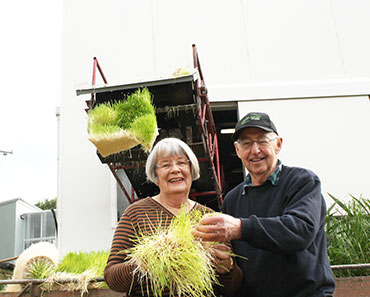
Helen and Eric Pidduck with eight-day-old barley sprouts ready for feeding to calves.
“The calves love it but it’s the health benefits of the sprouted barley we are most interested in,” says Helen.
Sprouted barley is known to contain vitamins A, E, C and B complex and the vitamin content of some seeds is believed to increase by up to 20 times their original value within several days of sprouting
Nearly all of the starch present in the grain is converted to sugar by sprouting, so it can be better used by the rumen than dry grain. This reduces acidosis problems, as the rumen pH stays more stable.
Helen says there are other benefits from enzymes in the barley, which have yet to be fully understood, but she and Eric are satisfied it’s helping improve the health and performance of their calves this year.
Future research
“In the past we’ve had problems with pneumonia in calves but despite this being a very wet spring, we’ve had few cases this year; and I think feeding barley sprouts has helped.
“The calves also look in better condition than last year. We can’t prove the results because we are not running side-by-side trials of calves that are fed barley and those which aren’t.”
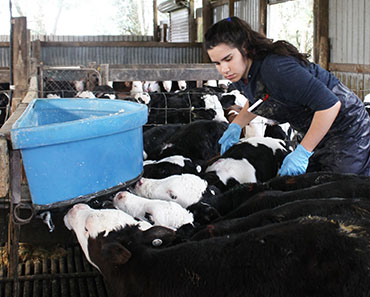
Barbara Mareira del Colletto working with young calves on the Pidduck farm.
The Pidducks hope in future a student might conduct a research trial on their farm to provide accurate data on the benefits of barley.
Sprouting their own barley is yet another example of the innovation the Pidducks bring to their well-known calf-rearing operation.
That the barley operation is running successfully is tribute to Eric’s inventive and ‘upcycling’ skills and Helen’s talents in researching not only the attributes of barley sprouts, but also in finding the materials and expertise required to make the project a reality.
“We looked at other sprouting facilities to find out what did and didn’t work and then set about designing and building our own.”
Sprout factory
The result is a custom-built ‘factory’ with coolstore-type cladding and underfloor heating and cooling.
Eric sourced used pipework from a Katikati glass house facility to construct the two bays of three metre high racks, which between them hold 512 sprouting trays, each three metres long by 400mm wide.
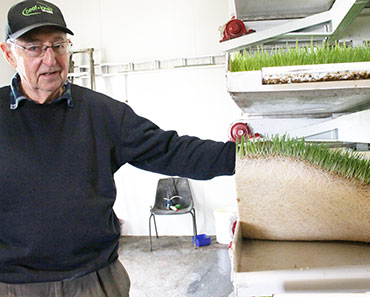
Eric Pidduck with a mat of spouted barley ready for harvest.
The process, now just four months old, begins with South Island barley stored in a hopper outside the sprouting shed being dispensed into 20 litre buckets placed in deep troughs and flooded with water to soak the seed for six hours.
From there the barley is spread evenly onto the PVC trays, which each have been made on-site from imported materials, using a specially constructed die.
“The barley doesn’t get watered the first day,” says Eric, who designed both the chain-driven system that moves the trays along the racks, and the irrigation, on a timer, which waters them.
Eight days growing
Within eight days, and after careful monitoring and attention by Hone O’Leary, the trays reach the end of the production line. It’s then that Hone, working from a scissor lift, removes the long carpet-like sections of barley, and drops them onto the conveyor – also designed and built by Eric – and so into the trailer for delivering to the calves.
The trays of tall, evenly grown green sprouts look impressive, but achieving that consistent result has taken a good deal of trial and error including experimenting to find out the optimum amount of water, the ideal air temperature and the seed density in the trays.
System’s flexibility
Helen says flexibility is another benefit of the system. “Because it takes just eight days to grow, we can quickly reduce the amount produced if we have fewer calves, or if the grass is growing well. We can also increase production too when required.”
The barley has been a welcome addition to the diet of the calves this spring, when prolonged wet weather has reduced grass growth and turned parts of some paddocks into mud.
It’s also enabling the Pidducks to continue their intensive operation, rearing 5000 beef and dairy calves annually for clients throughout the North Island, on their relatively small property.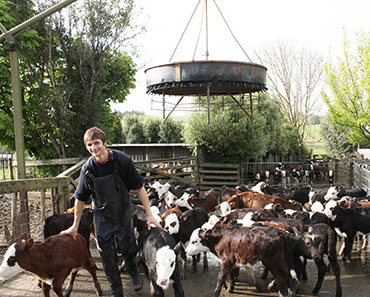
Up and away – Gerard Mehme from Australia shifts calves after hoisting their feeder above the yard on the Pidduck farm.
The couple, both from farming backgrounds, purchased their 40ha property when it was a very rundown dairy farm in 1992. “There were no fences and hardly any buildings on the property,” says Eric. Today it’s fenced into 40 paddocks and has several barns, and handling yards as well as the sprouting facility, and accommodation for staff.
Intensive rearing unit
When the farm was no longer economic as a dairy unit, the couple switched to calf-rearing, at one stage having as many as 7000 calves. “That was just too many, so we have cut back to 5000.” That still puts the farm among the largest intensive calf-rearing units in the country.
Helen attends sales, buying mid-range calves of consistent size, and looking for animals she knows her clients want. “We have no control over how the calves have been treated in their first few days of life – including whether they have received colostrum, so our programme is designed to develop their rumen and boost immune systems as quickly as possible,” says Helen.
New calves are kept in small groups in a shed with a slatted floor, where they are fed milk made from milk powder, or fresh, warmed milk, and pellets, and introduced to the sprouted barley.
As they grow, they graduate to other barns and spend some of their time outdoors in the paddocks before weaning.
While conventional drenches and vet medicines are used as required, homeopathic remedies are also administered.
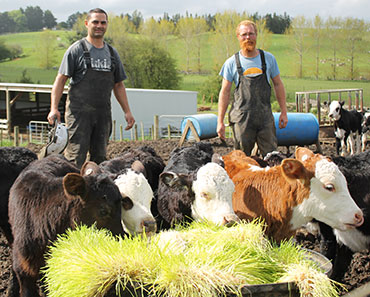
Hone O’Leary and Hadley Morawith calves feeding on barley sprouts.
Competent staff are vital to the operation. “Our manager of 11 years is Hadley Mora who has made a huge contribution to everything we do. We are grateful for his hard work, reliability, and dedication to our business.”
During the busiest times, Eric and Helen also employ backpackers from around the world, who are provided with on-site accommodation. “Not all of them have a farming background but most are graduates who quickly learn what is required,” says Helen.
Throughout most of the year calves are constantly coming and going from the property. Eric says while finishing farmers are among their biggest clients, lifestylers are among also important customers. “We sell from one calf to 1500.”
It’s the health, size and quality of the Pidduck calves that keep clients coming back year after year.


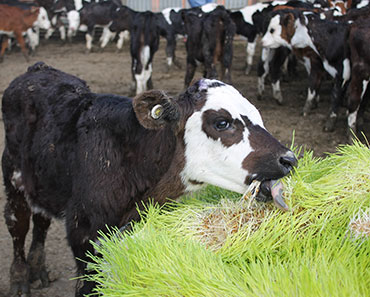
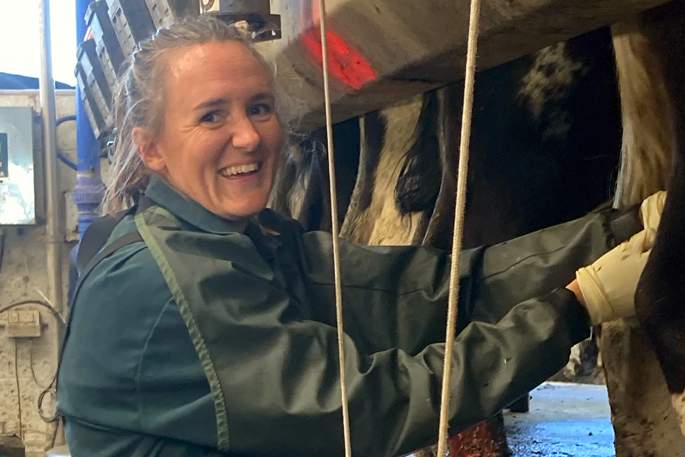
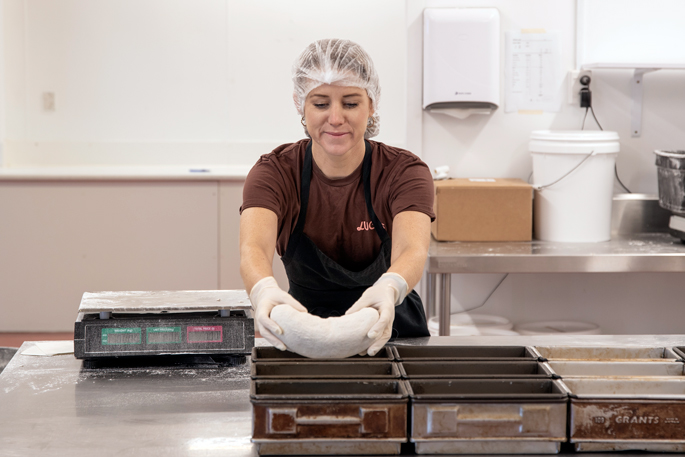
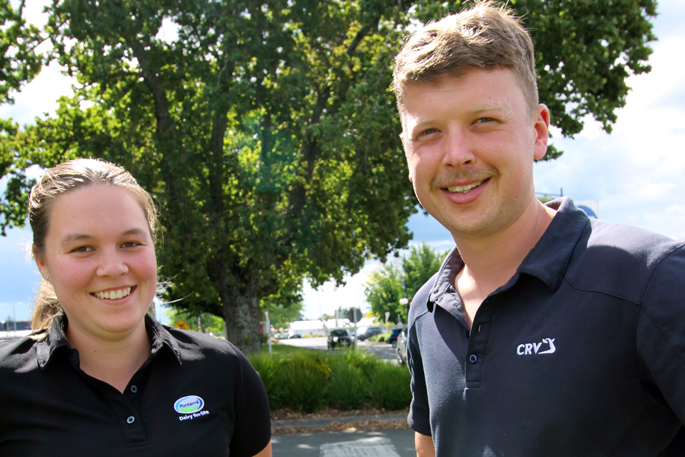
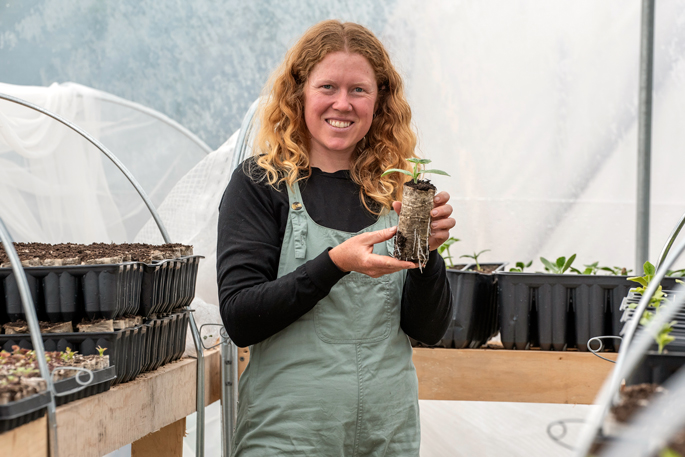
0 Comments
Leave a Comment